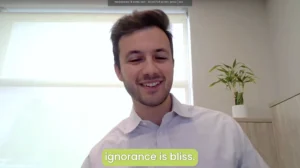Battery Storage Adoption Grows Alongside Renewable Energy. Utilities and Residences Need the Power Quality to Match.
Where does power quality fit in alongside a growth in U.S. battery storage adoption?
The energy revolution continues full steam ahead, even though 2022 hampered U.S. solar market growth in general. Solar continued to account for the majority of new electricity-generating capacity in 2022 according to SEIA research as renewables made up at least 22% of U.S. electricity generation and even more projected for 2023. With this adoption comes the need for next-gen energy infrastructure, especially battery storage, to manage an influx of disparate energy sources. Federal institutions are taking notice of this need; the U.S. Department of Energy recently announced the launch of a collaborative program to study and accelerate the adoption of long-duration energy storage.
Battery storage will be a key investment to support our expanding energy grids and the businesses and residences they support; forecasts show energy storage capacity will get a boost of nearly 60 GW through 2026 in the U.S.. But what role does power quality play in this necessary next-gen energy infrastructure, and what equipment will help make the most of captured energy?
Enter smart inverters, which are optimizing our electrical grids and improving the quality of the energy we consume. As solar systems become more prevalent, modern inverters are stepping up to maintain power quality and reliability. With the ability to switch DC input from solar panels to AC output for grid usage, inverters have evolved from mechanical to solid-state devices. Today, these advanced inverters in battery backup systems also provide valuable grid services like reactive power, ride-through, and frequency response.
Joe Piccirilli, CEO of RoseWater Energy, sheds light on the key role of inverters in battery backup systems and clears up some common misconceptions on the role they play in next-gen energy infrastructure.
Joe’s Thoughts
“Today, I’m gonna spend a few minutes just talking about the role of the inverter in a battery backup system because there seems to be some real confusion about the function of an inverter. Let’s start with the very basics. A battery puts out a direct current. Residents run on alternating currents. So the role of the inverter is to take the direct current from the battery and convert it to alternating current to feed the residents.
The confusion today stems because many, many battery backup manufacturers always quote battery capacity, and that figure is given in kilowatt-hours. Unfortunately, rarely do they quote the capacity of the inverter. That figure is generally given in kilowatts. The problem is if you do not know the capacity of the inverter, you have no way of calculating how much of a resonance can be run by those batteries because the inverter is the limiting factor.
I think an easier way to look at this is to take it out of the realm of batteries and energy and bring it into the realm of the realm of automobiles. If a car has a hundred horsepower engine, no matter how big you make the gas tank, the engine is still a hundred horsepower. That does not change. So the amount of power that this car can generate is a hundred horsepower.
What the gas tank does is tell you how long that hundred-horsepower engine could travel before it runs out of fuel. The inverter is that engine the size of the inverter tells you how much power the system can generate. The size of the battery tells you how long it can generate that power for. In order for you to appropriately spec battery backup for a residence, you must know both numbers.”
Article written by Azam Saghir.








